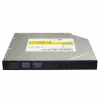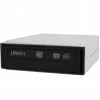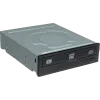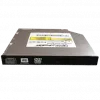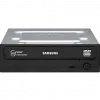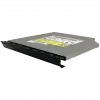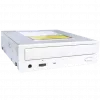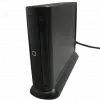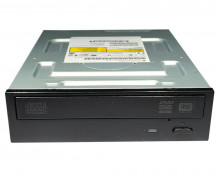
In computing, an optical disc drive (ODD) is a disk drive that uses laser light or electromagnetic waves near the light spectrum as part of the process of reading or writing data to or from optical discs. Some drives can only read from discs, but recent drives are commonly both readers and recorders. Recorders are sometimes called burners or writers. Compact discs, DVDs, and Blu-ray discs are common types of optical media which can be read and recorded by such drives.
